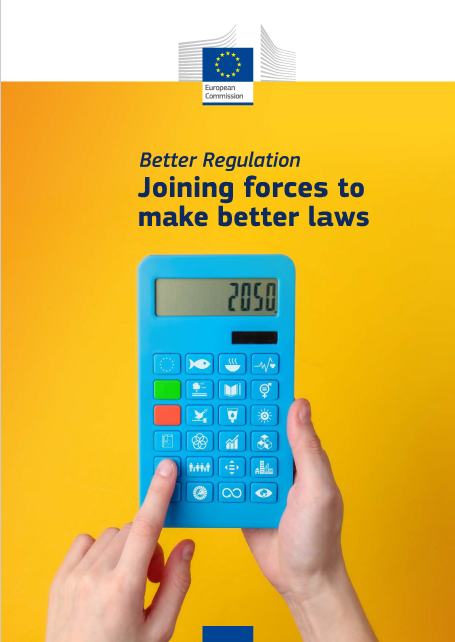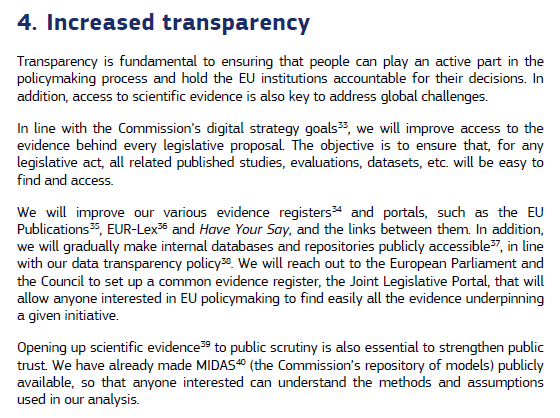Latest Commission communication appears to reframe transparency commitment made in the 2016 interinstitutional agreement on better lawmaking.

On 29 April, the Commission presented a new communication entitled “Better Regulation: Joining forces to make better laws”. In its own words, the communication is intended to “[propose] a number of further improvements not least to ensure our policies support the recovery and resilience of the EU and its twin [post-pandemic and climate] transition in the best possible way”.
The communication explicitly refers back to an interinstitutional agreement signed in 2016 by the three institutions, concerning improvements to the law-making process, calling on the Parliament and Council to live up to the commitments made therein.
What strikes the reader in the current communication is its strong focus on objectification and control. Most observed are the words “impact” (70 references), “evidence” (34), and “evaluation” (41). It is in this light that additional clarifications with regard to transparency and access seemingly must be read.
A separate section in the communication deals with the issue of transparency (see image below). It focuses squarely on the evidence base of legislative proposals, promising improved access to such issues as “published studies, evaluations, datasets, etc.”, as well as related registers.

The communication is less clear on the political process that carries the legislative process. The term “amendments” is only coined to highlight the -according to the Commission- problematic nature of some changes suggested by elected politicians in the Parliament and the Council for the clarity and evidence base of adopted legislation (i.e., their choices might go against proposed ‘best regulatory options’). The role that transparency of amendments plays in democratic accountability is nearly absent from the text (the term ‘accountability’ itself features only once in the document).
In this light, the Commission’s call on the Parliament and the Council to set up a “common evidence register” referred to as the Joint Legislative Portal, stands out. Purportedly, such a register would serve to “allow anyone interested in EU policymaking to find easily all the evidence underpinning a given initiative” [italics added]. This wording appears ambiguous, given the fact that the institutions had already agreed over five years earlier to set up a joint legislative observatory:
In order to facilitate traceability of the various steps in the legislative process, the three Institutions undertake to identify, by 31 December 2016, ways of further developing platforms and tools to that end, with a view to establishing a dedicated joint database on the state of play of legislative files. (IIA 2016, point 39)
As can been seen, the interinstitutional commitment towards more observable legislation even included a deadline which, needless to say, was spectacularly missed. Five years after it was agreed upon, the current state of this portal remains unknown.
More significant, however, seems the fact that the focus on ‘evidence’ and ‘impact’ is entirely absent in this previous text, with a proposal that is far more holistic in its purport (“the state of play of legislative files”), suggesting an ambition to gather all information relevant to a legislative dossier (and not just that related to evidence) in one place.
It remains unclear whether the latest proposal is intended to reframe and override, or rather to complement the previous interinstitutional commitment. A process to be followed.



